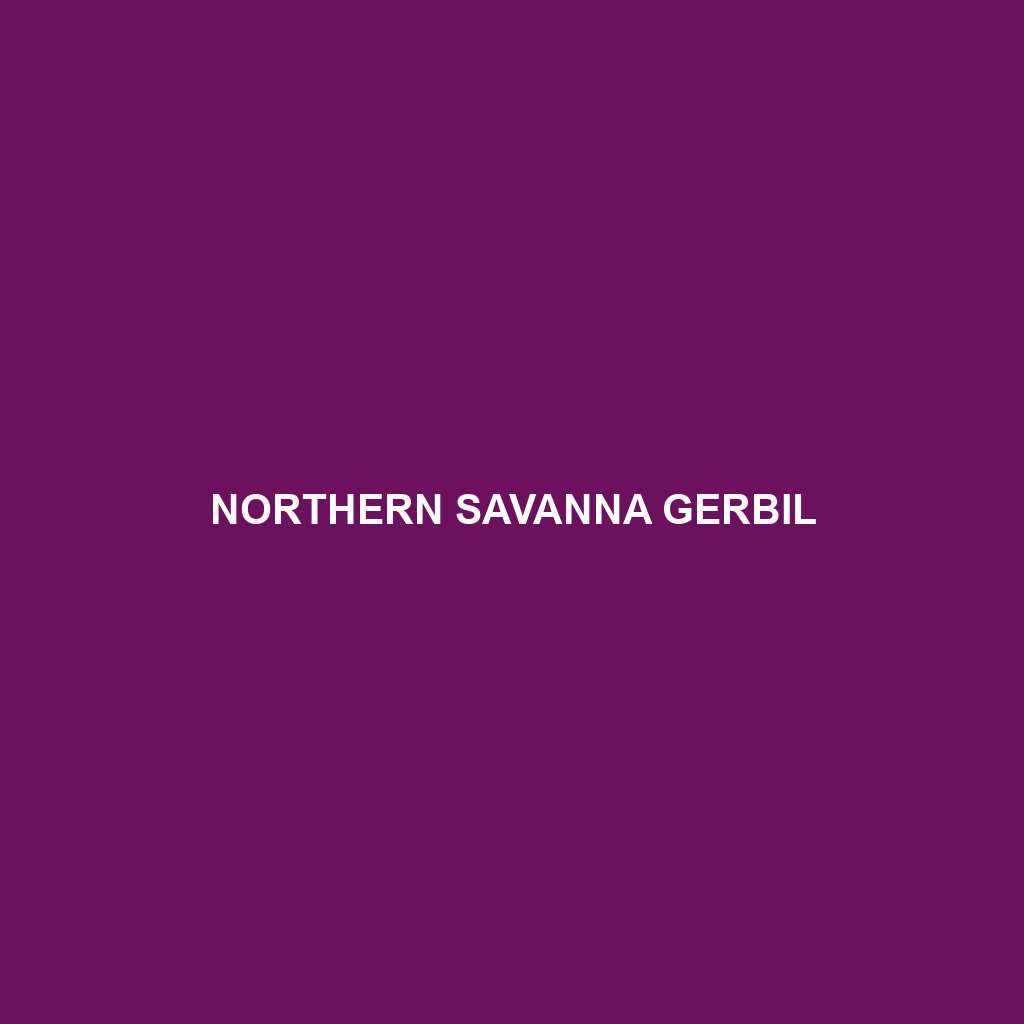Common Name: Northern Savanna Gerbil
Scientific Name: Gerbilliscus robustus
Habitat:
The Northern Savanna Gerbil is primarily found in the arid and semi-arid regions of Africa, particularly across the vast savannas of countries such as Kenya, Tanzania, and Somalia. These gerbils thrive in sandy soils and grassy plains where they can burrow and forage for food, accommodating their need for both shelter and mobility.
Physical Characteristics:
This medium-sized rodent typically measures between 10 to 12 inches in length including the tail. The Northern Savanna Gerbil has a distinct light brown to yellowish fur that provides excellent camouflage against the savanna landscape. They possess a long, tufted tail, large ears, and dark eyes—features that enhance their ability to detect predators and navigate their environment.
Behavior:
The Northern Savanna Gerbil is primarily nocturnal, engaging in foraging and social activities during the cooler nighttime hours. They are known for their remarkable digging skills, creating extensive burrow systems that serve as homes and storage for food. Their social structure is complex, often seen living in small family groups, which enhances their chances of survival against predators.
Diet:
The diet of the Northern Savanna Gerbil mainly consists of grasses, seeds, and roots. They are herbivorous rodents that prefer seeds high in carbohydrates, which provide them with the necessary energy to thrive in their harsh environments. The availability of food sources can significantly influence their foraging behaviors and habitat selection.
Reproduction:
The breeding season for the Northern Savanna Gerbil typically peaks during the rainy months, which facilitates a more abundant food supply. A female can give birth to 2-6 offspring after a gestation period of about three weeks. The young are altricial at birth, developing quickly and becoming independent within a month. Parental care is primarily provided by the mother, with siblings often helping to groom and protect the newborns.
Conservation Status:
Currently, the Northern Savanna Gerbil is classified as Least Concern by the IUCN, meaning they are not facing immediate threats to their population levels. However, habitat loss due to agriculture and human encroachment poses ongoing risks that could potentially impact their numbers in the future.
Interesting Facts:
Did you know that Northern Savanna Gerbils can leap impressively up to three feet to evade predators? This agility, combined with their burrowing habits, helps them escape from threats quickly. Furthermore, these gerbils can store food within their burrows, allowing them to thrive even during dry seasons.
Role in Ecosystem:
As herbivores, Northern Savanna Gerbils play an essential role in their ecosystem by aiding in seed dispersal and contributing to soil aeration through their burrowing activities. Their presence supports the food web, serving as a food source for various predators, including birds of prey and small carnivores.
